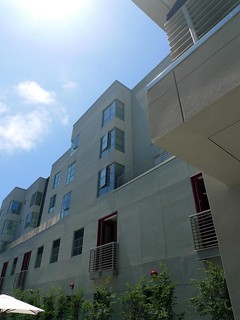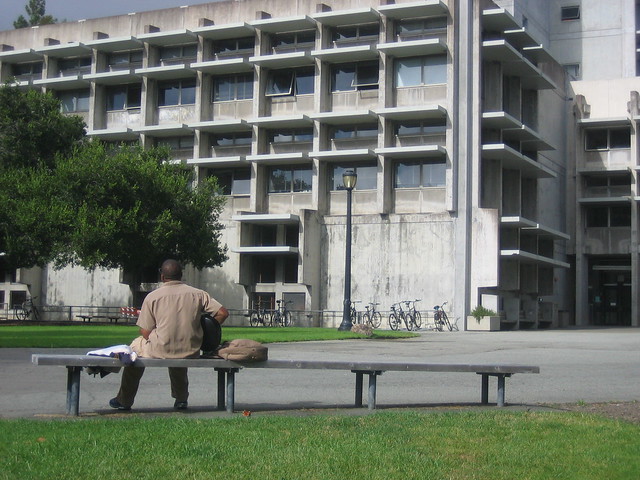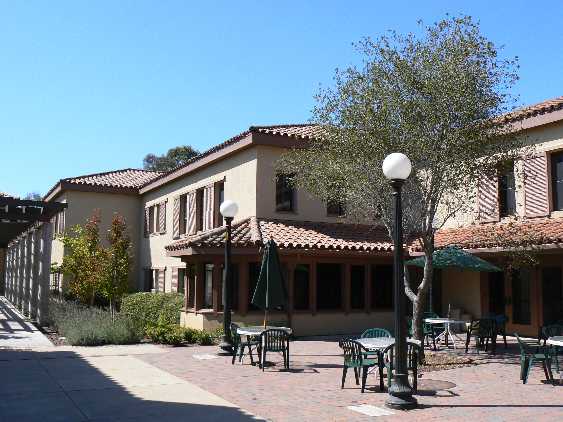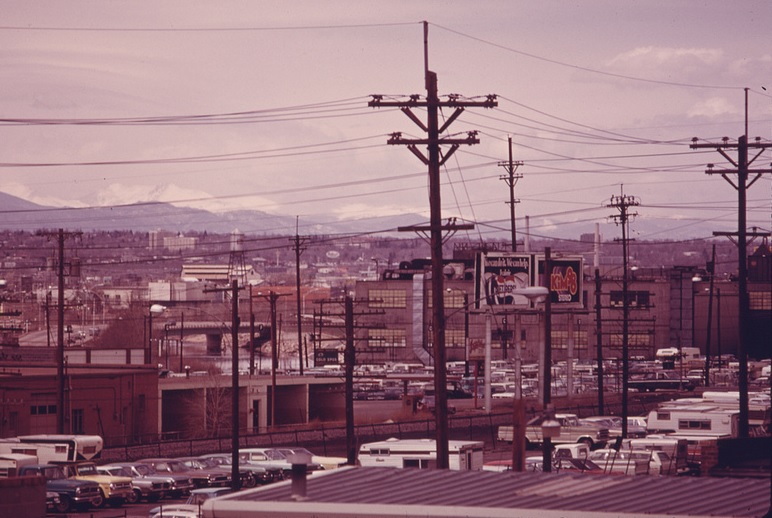As one of the founders of the Congress for New Urbanism in Chicago, it should be no surprise that Daniel Solomon is a leading advocate for diverse neighborhoods, pedestrian-oriented communities, and physically defined public spaces. He proposes urban places that celebrate history, climate, ecology, and building practice.
In Global City Blues, Solomon relates experiences that have led to this doctrine, and the paradigms that frame these points of emphasis.
In his first essay, Solomon takes us through a quick history lesson on architecture. He puts the blame for much of our architectural difficulties today on Modernism. From the beginnings of America, to National Socialsim, to urban renewal projects, we can see how Modernism led architects astray.
History IgnoredThe protagonists of Modernism gained unsubstantiated optimism. They ignored the past and the basic human experiences. To establish this point, Solomon laments that Walter Gropius made his students “learn to draw or model widely spaced white boxes” rather than study about architectural history. Joseph Eichler “was an aesthetic missionary, and a successful one, but his noble accomplishment was part of something far from noble- the set of post-war policies that built our sprawling, isolated suburbs and wrought ruthless damage on our cities and city-regions.” While Modernists smugly produced their faulty architecture, Solomon points out that there are other economies that have developed and may be used as a metaphor for our present-day crisis. One such example is the “culture of food” in America. The “foodies” successfully changed the American culture in order to establish nutritious, fresh, imaginative food for the mass population that was rooted in local traditions and crops. |
 (mark.hogan– flickr/creative commons license) |
Solomon, referencing back to these some-what successful food systems in America, suggests that agriculture should play a role in the city. Patches of farms and wilderness should be seen daily by the city dweller.
Le Corbusier and Rem Koolhas went so far as to ignore their own landscape- the history and human influence. Gemeindebauen is a forgotten practice. The post-war Berkeley campus is one such example of “a huge reification of forgetfulness, a drunken stupor frozen in concrete.” How a mighty establishment has fallen!

(andydr– flickr/creative commons license)
It is ironic that the most dysfunctional, ugliest, and most despised buildings were built in an age of great optimism, confidence, and prosperity, the era following World War II. Solomon claims this is because the Modernists forgot important lessons in their rush forward their new technologies. He points to Eastern Europeans in the late twentieth century who suddenly forgot how to bake bread.
Human Experience Ignored
The “evil monster” of Modernism severely damaged the human experience by ignoring the past and insulating people from their environment. People sit in buildings without a sense of the weather outside or the time of day indicated by the sun movement. They are cut off from natural weather cycles, from social interaction, and from visual cues for the time of day. The nature of space inside buildings and the connective urban fabric around buildings are in dire need of repair.
Urbanism gunks up the system with a “tribunal of grand inquisitors” that prevent real home-grown architectural experiences with complex marketing schemes, fanatical code enforcement, and misguided cost control. Their world is lit by grids of fluorescent lights and the air smells of carpet glue. As well as obsessing over cheap and machine-like architecture, Modernists ignore anything outside their own landscape.
Solomon emphasizes the need for architecture and city designers to rediscover human needs in order to fulfill the human experience. The first thing that needs to happen is for us to get away from the “non-history” involved in our plastic communities. New projects must not destroy or trod over already established and deeply rooted systems. Stanford University was able to establish new buildings that contribute rather than dominating the overall system. Stanford dedicated 9% of their building budgets to the assessment of existing structures. Adequate space between buildings and sensitivity to existing systems and buildings has resulted in a beautiful campus that is successful in many ways.

(kiwanja– flickr/creative commons license)
In order to keep buildings and towns vital to the human experience, rather than gashes in the landscape, Solomon lists other specific remedies. Windows allow the occupants to relate to the weather and time of day. Windows should be able to be opened in order to connect people to that weather quite literally, and glass should be very transparent so they can clearly see their surroundings. Floor plans should not be mazes of lights and carpet, but easily navigatable with places to walk which are clearly connected to the outside. The environment, inside as well as outside, needs to provide unpredictable encounters with people. The air should be real, much of the light should be real, and the materials should be real. All materials should feel like their texture and be assembled like they look.
The history and context of the town and section of the town the people live in should be made evident and relevant. The human experience and sense of place has much to do with local cultural and local agricultural fabric.
Method Rather Than Result
Solomon relates a shocking presentation by a 1920’s German modernist Konrad Wachsman. After presenting a brilliant and expensive machine that precisely detects the location of any two points inside a cube, maneuvering the cube so that the points could be anywhere inside, he was asked what the point of this contraption was.
Wachsman answered, “Before there was Mozart, there was the harpsichord.” Solomon says Wachsman’s lecture was boring, audacious, and “just plain nuts.” Students left in droves and the dedicated were left shaking their heads. Modernism raises the banner of newness and technology, but it is far from economical and effective as a means of architecture and design.
New Urbanism
Solomon presents the land-use history of his hometown San Fransisco as the first counterrevolutionary against Modernism. The planners and engineers who laid out the street grids and circulation systems were often at odds with the people of the city. The public finally revolted against a proposed highway system, and other cities like Portland followed. San Francisco may be a traffic mess today, but the urban fabric is saved from that destroying element.
Urban sprawl and disconnected neighborhoods are bad results of freeways. Solomon discusses the HOPE-VI program that would clear out crappy low-income housing and build permanent communities designed for the human experience. Predictably, Solomon also extols New Urbanism and its success stories. While some New Urbanists “just don’t get it” and contribute further to urban sprawl and disconnected communities, some are able to connect planning with transportation departments.
The usual points of New Urbanism, including deterrence of the automobile and implementing of human scale and history, is the moral of Solomon’s essays. He builds this rhetoric on a foundation of history that blames Modernism for the ills of our society and environment. He does this effectively with significant history lessons and highly opinionated observations of our current society. But most importantly, Solomon inspires the reader with a sense of optimism with his examples of success and plans that will surely be successful. This inspiration is ironic considering the title is “Global City Blues.” He is bewildered by those who still just can’t their acts together.
By laying out specific and small points that greatly enhance architecture, the reader is left with the same feeling of bewilderment. The politics, red-tape, and disconnect between governmental agencies is probably presented as the greatest hurdle. Architecture is just one field effected by New Urbanism. Overall it makes daily life more user-oriented and experiential.
© Benjamin Blankenbehler
Originally written for the University of Idaho, 2007
- ^Quotes from Global City Blues by Daniel Solomon, Island Press, 2006

